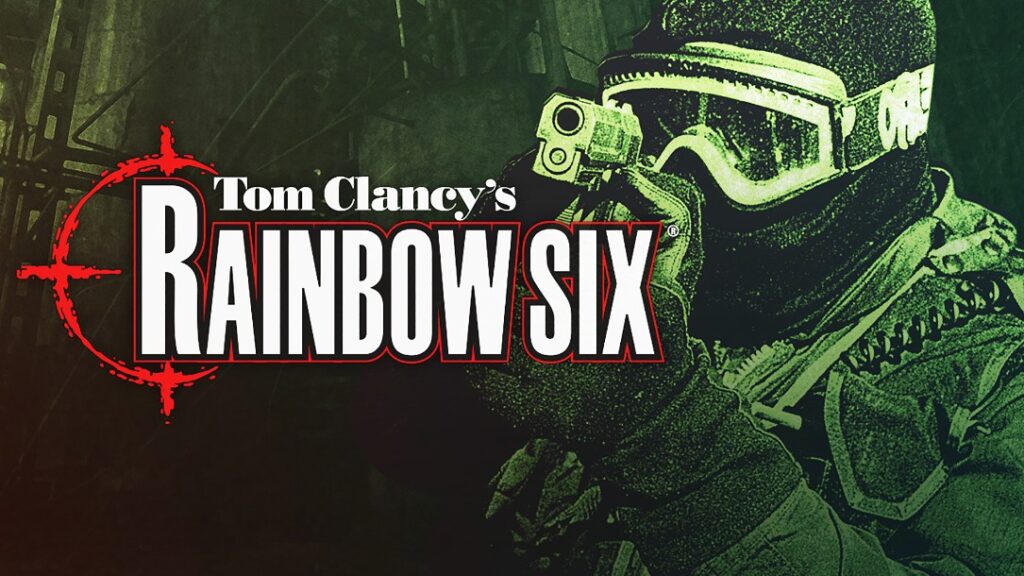High Desert Cartridge Company, a small ammunition company based in Goldendale, WA, is probably best known for its 9mm and 5.56mm ammunition that acclaimed instructors like Bill Blowers or Kyle Defoor shoot. However, this ammunition company has been busy behind the scenes consulting with influential personalities in the revolver realm, like Darryl Bolke and Chuck Haggard.
The goal is to ramp up load development and production of various revolver cartridges to better cater to the current revolver renaissance. At the time of this writing, High Desert Cartridge is loading and selling .38 Special, .357 Magnum, .32 H&R Magnum, .41 Magnum, .44 Magnum, and .45 Colt.
The High Desert Cartridge .357 Magnum
This article is meant to showcase HDCC’s practical .357 Magnum loads, which are deliberately tuned for efficiency between the projectile’s muzzle velocity, ballistic performance, and recoil management. The principal load uses Hornady’s classic 158-grain XTP jacketed hollow point bullet, which requires approximately 900 FPS at the muzzle in order to expand properly. This is exactly what the High Desert Load sets out to accomplish from a three-inch barreled ‘snub’ revolver.
Advertisement — Continue Reading Below
The concept is two-fold. First, reduce “excess” energy beyond what’s needed for this JHP design to expand properly and be easier to shoot. Second, by making the cartridge perform more efficiently, it can be safely loaded and fired through classic and vintage .357 Magnum revolvers without any danger of battering or damaging them. This aspect was extremely critical to the success of this cartridge and one of the initial considerations in the way actual load development began.
With my interest in classic revolvers, it was actually this “feature” that caught my attention.
A Brief History Of The .357 Magnum And The Magnum Duty Revolvers
To contextualize High Desert’s .357 Magnum loads, it’s worth briefly glossing over the history of the .357 Magnum.
Advertisement — Continue Reading Below
The .357 Magnum was developed in the mid-1930s and could be simply described as a hot-rodded .38 Special round pushing the same size bullets with a stouter powder charge. Naturally, as a chambering capable of both higher pressures and higher velocities, .357 Magnums use slower burning propellants with charges that would destroy most .38 Special revolvers.
So, for safety reasons, the casing on the .357 Magnum was designed to be ⅛ inch longer to prevent accidental chambering in .38 Special revolvers. Otherwise, both cartridges are very similar, to the point that untrained eyes will visually confuse the two.
The original .357 Magnum load from 1935 used a large pistol primer (a necessity at the time to thoroughly ignite 1930s-era propellants). It pushed a 158-grain bullet out of an 8-inch barrel at a screaming 1,500 FPS at the muzzle. The trend of very hot and fast .357 Magnum factory rounds continued through the “Golden Age” of the double-action revolver during the 50s, 60s, and 70s, and its sunset in the 1980s.
Advertisement — Continue Reading Below
.357 Magnum Makes its Debut
When the .357 Magnum made its debut in 1935, it was paired with Smith & Wesson’s famous Registered Magnum revolvers, which were later codified into the Model 27 family. These revolvers were built on S&W’s large and beefy N-frame, which could safely handle the hot .357 Magnum by virtue of its size and heft. The downside of having a much larger revolver frame meant that guns didn’t carry as nimbly the way standard framed .38-caliber service revolvers did.
By the mid-1950s, acclaimed writer, shooter, and Border Patrolman Bill Jordan consulted with Smith & Wesson to develop the Combat Magnum, known as the Smith & Wesson Model 19 after 1957. The premise behind the S&W Model 19 was to have a .357 Magnum-rated revolver built on the more nimble K-frame for duty. They would match the size and heft of standard .38 Special revolvers while also being able to handle the more potent .357 Magnum rounds. The idea was that coppers would shoot .38 Special rounds for training and practice and load the cylinder with full-power .357 ammunition when it came time to go on patrol.
A Heavy Hitter
The Smith & Wesson Model 19, Model 66, Model 13, and Model 65 have gone on to become some of the storied gunmaker’s most popular and sought-after double-action revolvers and have all gone up in value. In their heyday, the compromise of the smaller frame handling the powerful Magnum loads of the day still presented many problems. Besides the higher pressures, blast, and recoil that were part and parcel of old-school .357 Magnum loads, these rounds also routinely broke guns due to that elevated potency. Not to mention that many officers couldn’t handle the increased blast and pressure and thus had a hard time qualifying with their service revolvers.
Advertisement — Continue Reading Below
Even though factory .357 Magnum rounds loaded today aren’t loaded as warmly as yesteryear’s vintage loads, it’s still a good idea to avoid shooting them through vintage guns. Especially now that they’re older and will never be made again.
The High Desert Solution
As I already stated, High Desert’s approach with its .357 Magnum loads was to reach a happy medium between pushing bullets out with adequate velocity to ensure reliable expansion of XTP bullets without excessive pressure or velocity while also preventing undue wear and tear in use through older guns. Another benefit of shooting a better-regulated .357 Magnum cartridge as opposed to a hotter .38 Special +P round is that the longer Magnum casing keeps leading in charge holes to a minimum while also functioning at a relatively lower pressure.
In the spirit of this, I brought my four-inch Smith & Wesson Model 66 (square butt, no-dash) to the gun club to group this ammo at 15 yards and also shoot it over the Garmin Xero C1 chronograph I just purchased. I fired six different 10-shot groups at 15 yards using a bag. All 60 rounds I shot were captured with the Garmin Xero. Two groups consisted of the XTP load, and the other four groups used the flat-point load.
Advertisement — Continue Reading Below
The XTP load is loaded slightly warmer to ensure that this Hornady bullet has enough velocity for expansion. The flat-point load is loaded milder with the intention of being used recreationally or for target shooting. In the future, High Desert Cartridge Company plans on increasing the charge of this flat-point load to make it the training companion of their XTP load. This would help not only for practice and training but also to keep the sights zeroed equally.
Performance Results
Like the original Model 19, the Model 66 also includes adjustable sights. The rear sight on my revolver is zeroed for 158-grain .38 Special loads. So, the faster High Desert XTP load printed approximately 2.5 inches high at 15 yards.
In addition to the data screenshots I pulled from the Garmin chrono app, I also enlisted the help of the group analysis tool I’ve been using. Ironically, like the XTP bullet, this software is also a Hornady product.
Advertisement — Continue Reading Below
158-Grain XTP Results (Model 66)
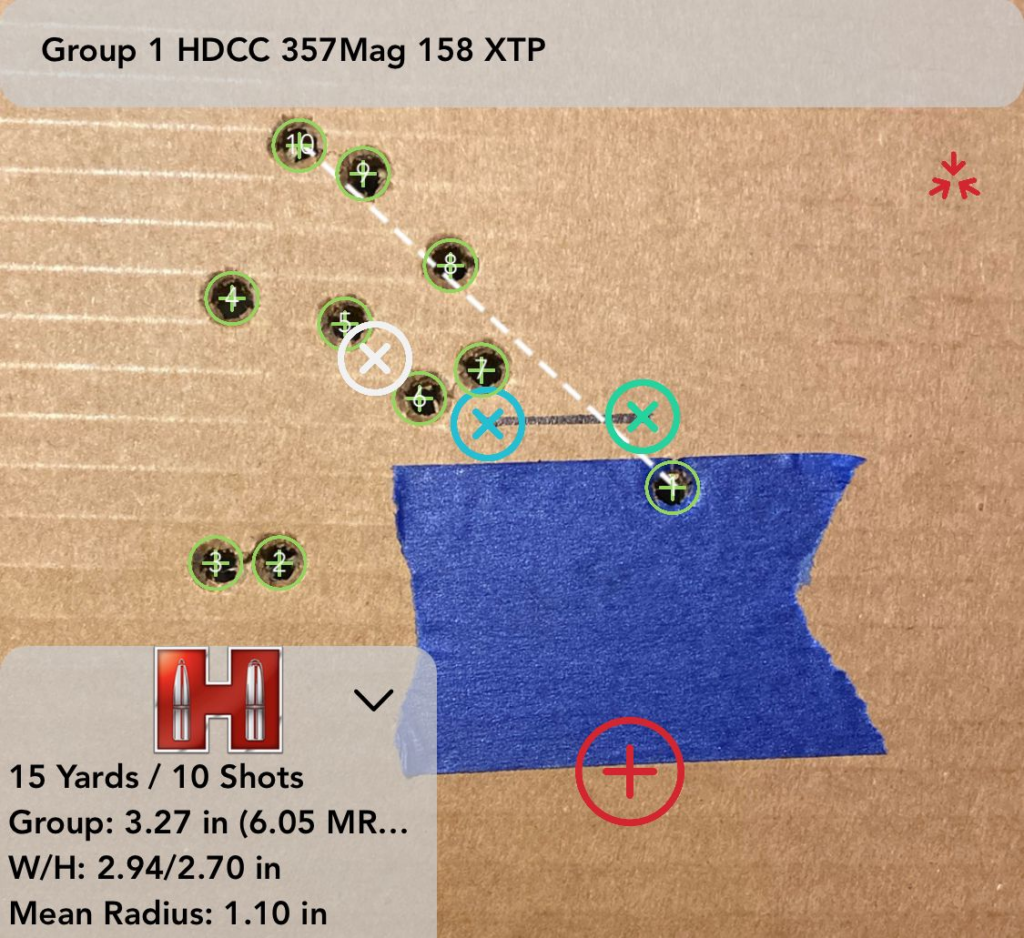
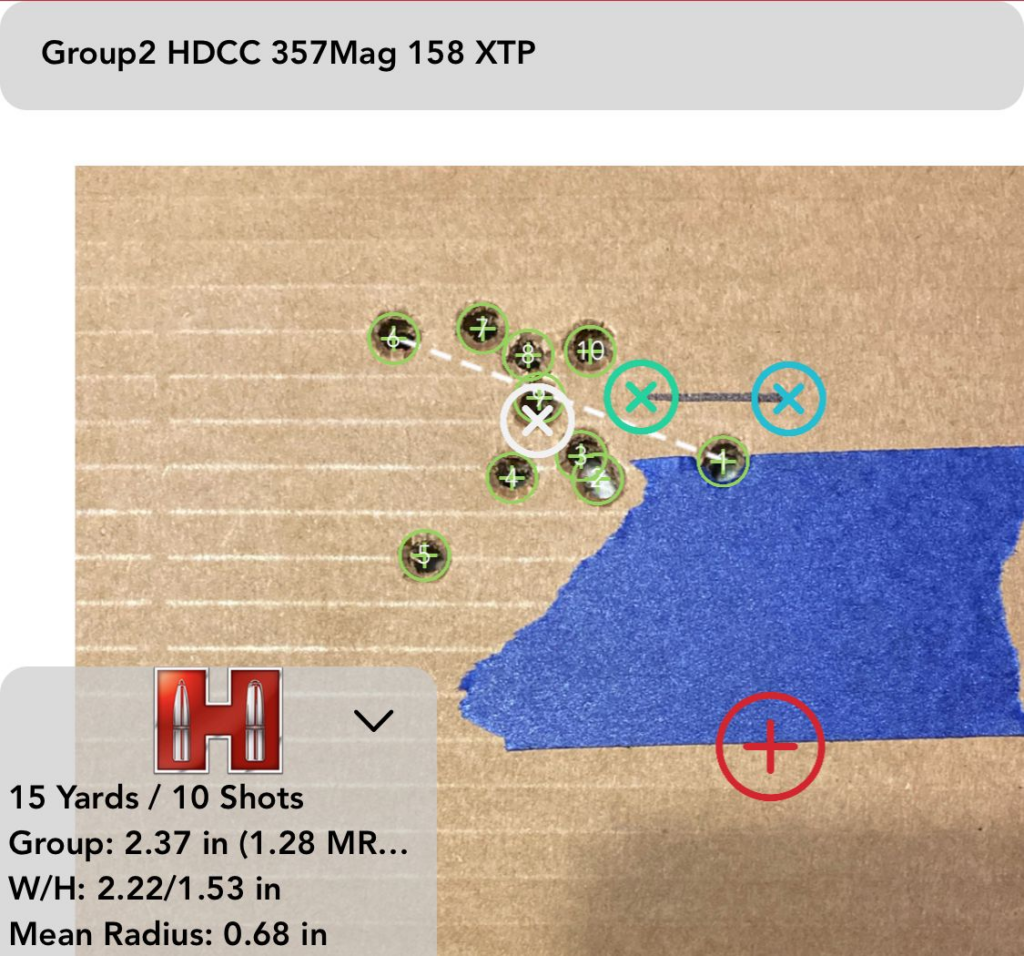

Advertisement — Continue Reading Below
158-Grain Flat Point Results (Model 66)
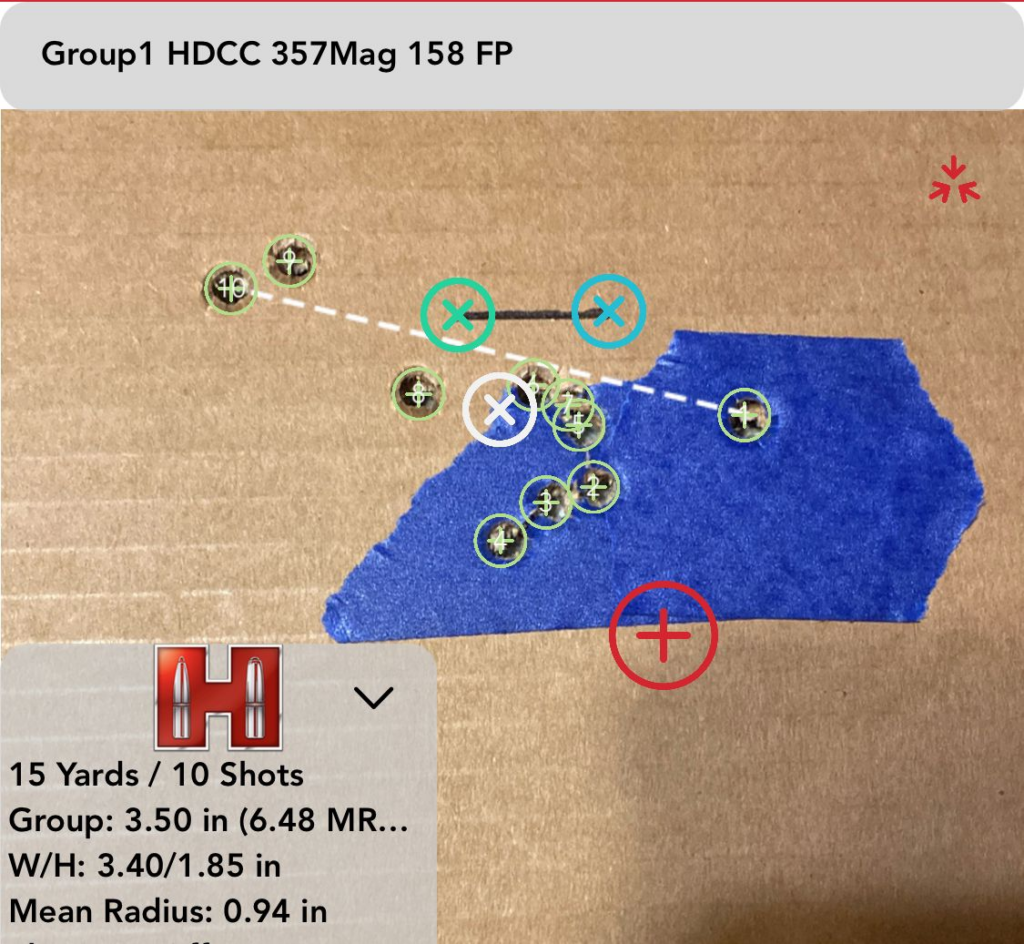
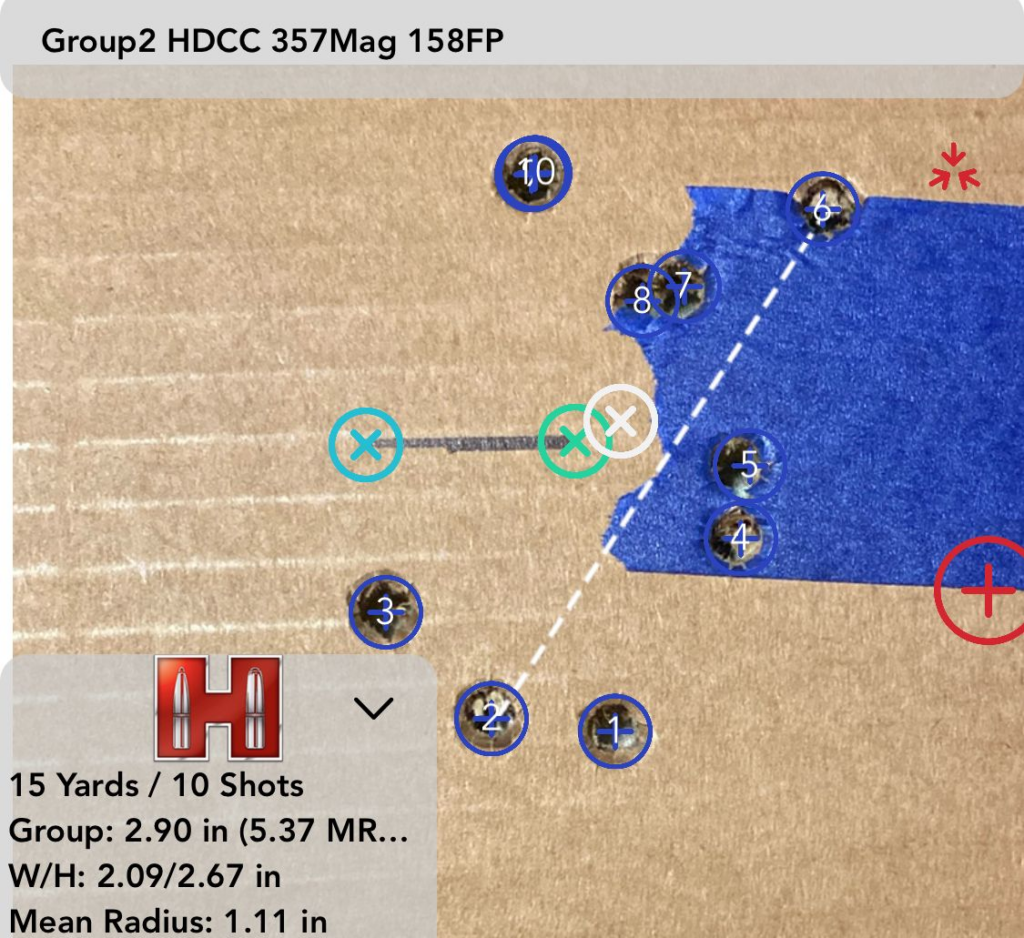
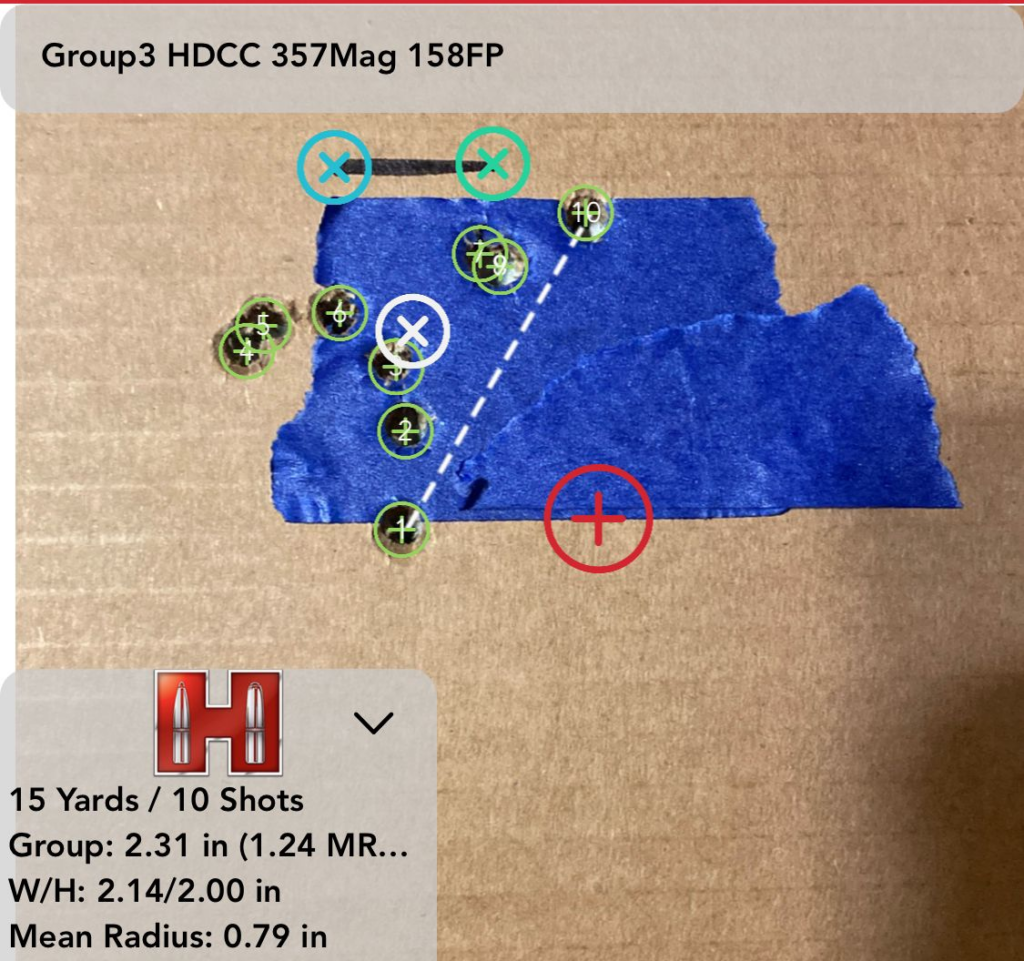
Advertisement — Continue Reading Below
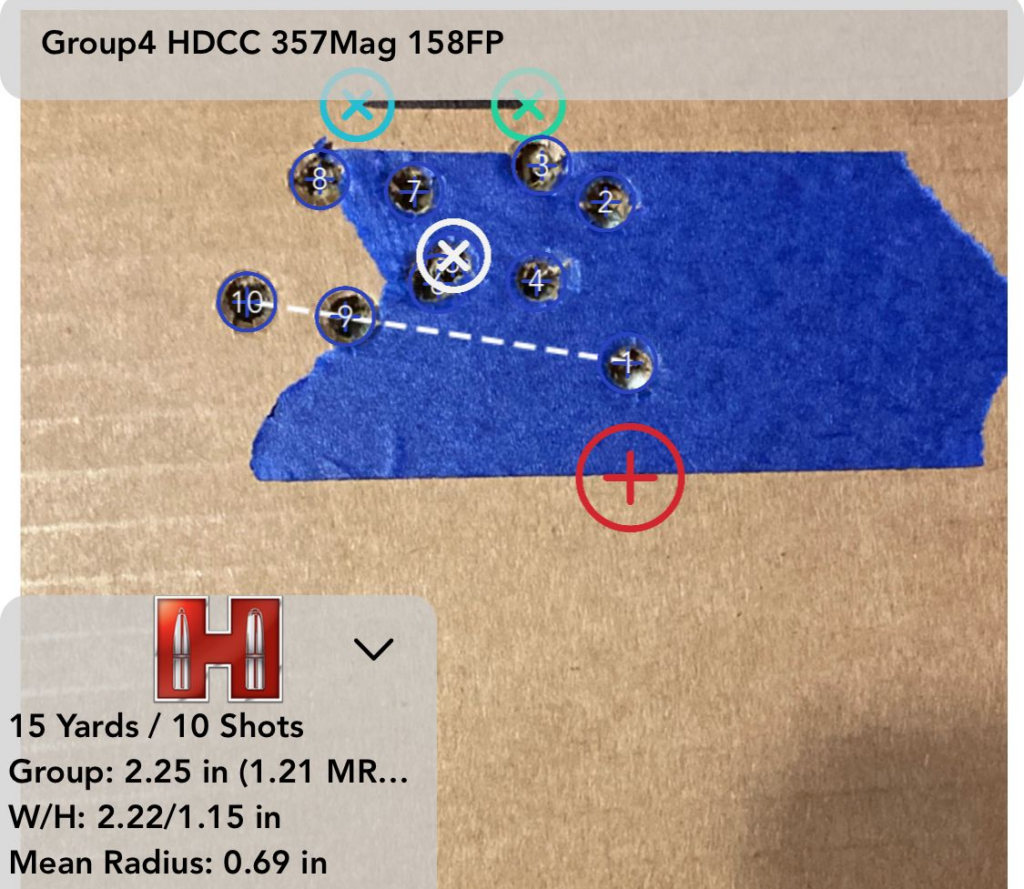
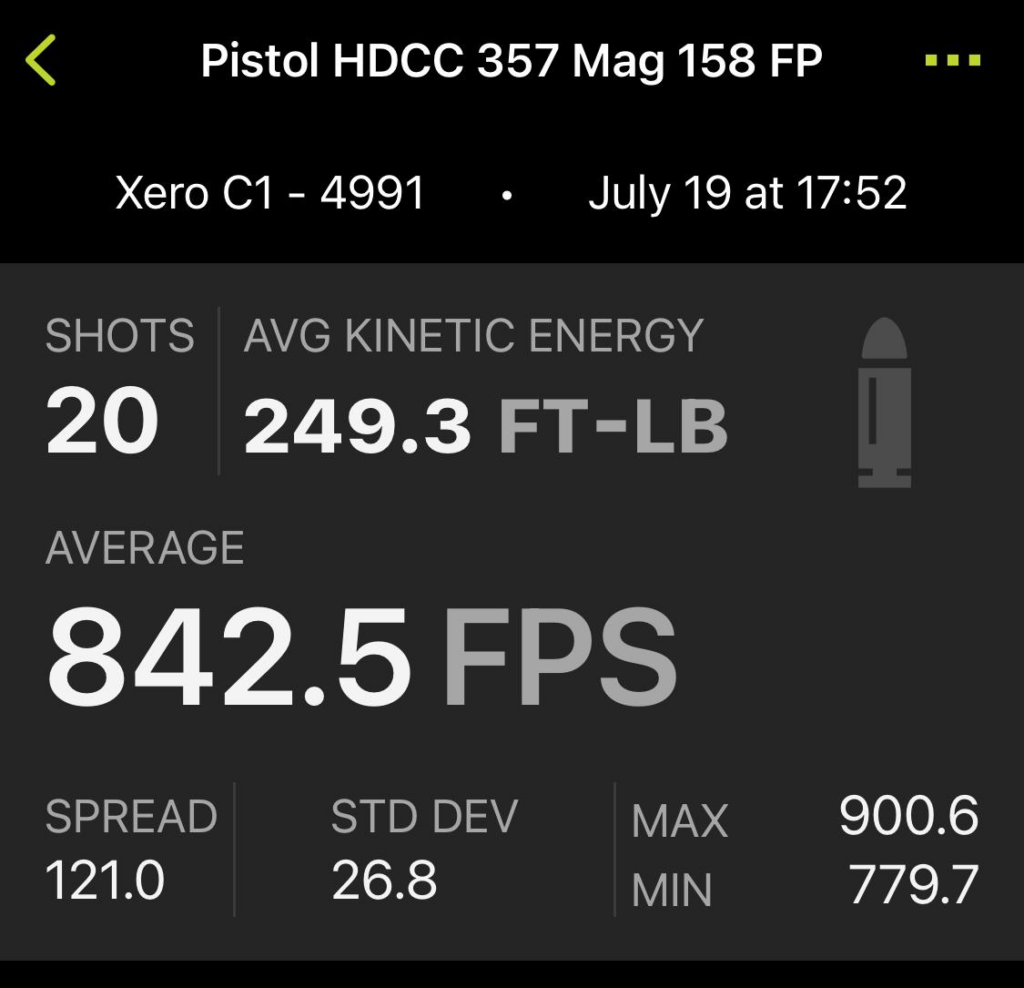
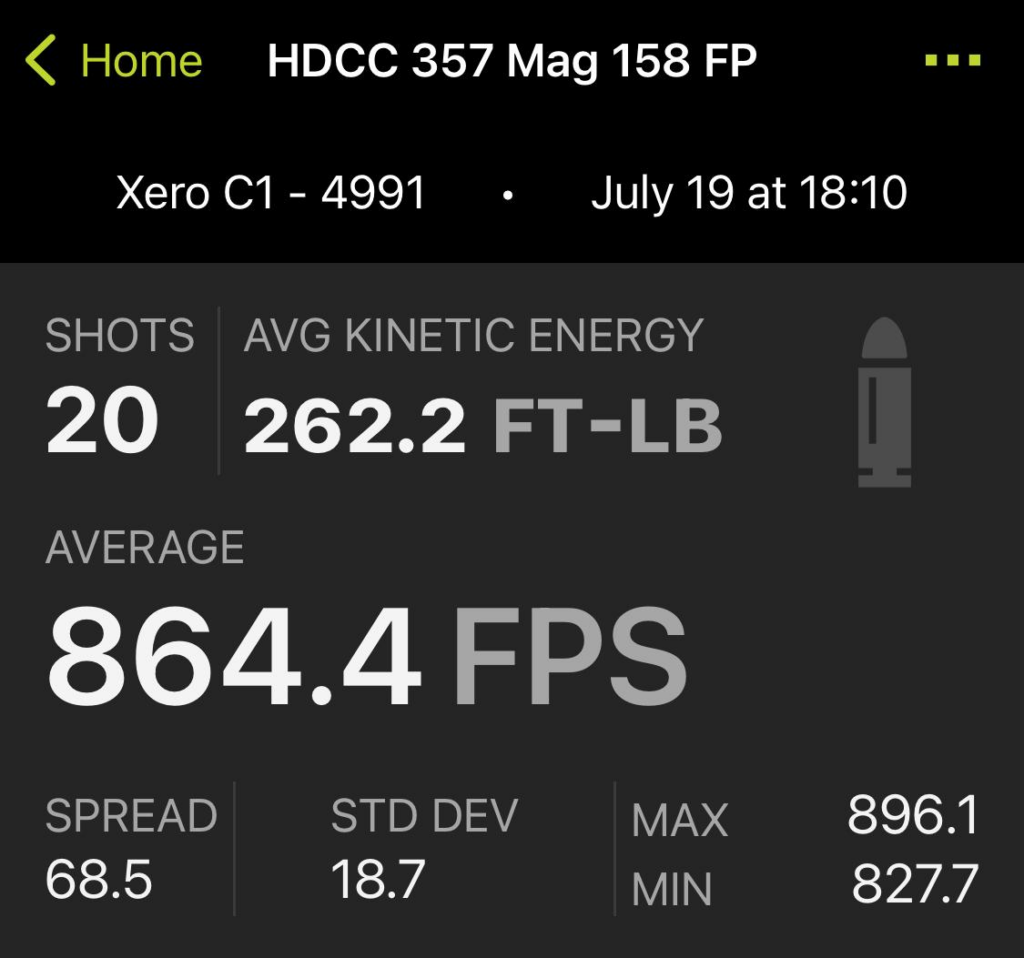
Addendum: 158-Grain XTP Results From Taurus 692 Executive Grade

When it comes to data and information, the more, the merrier. I also shot 20 rounds of the High Desert XTP load through the three-inch Taurus 692 Executive Grade for its own review (a work in progress as we speak). So, I don’t see the harm in including its groups and data here, too, for the sake of more thorough information as it pertains to this load.
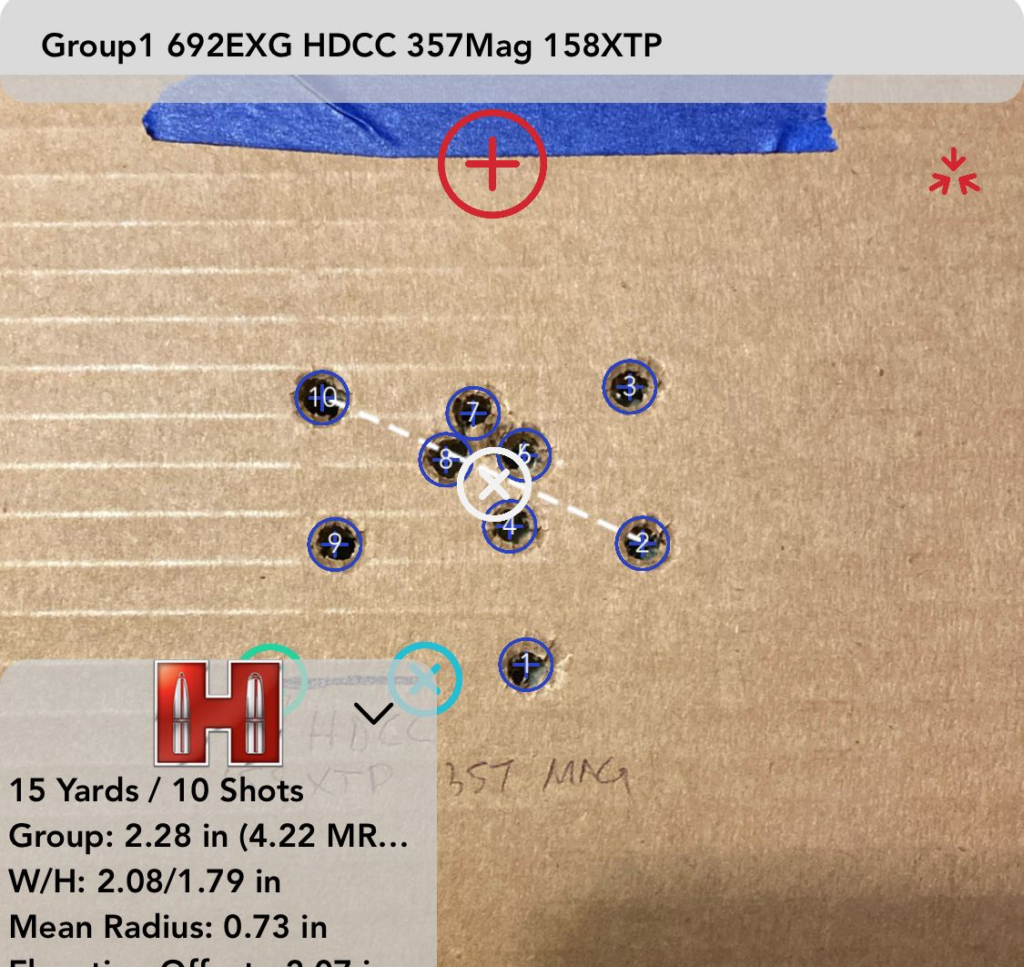
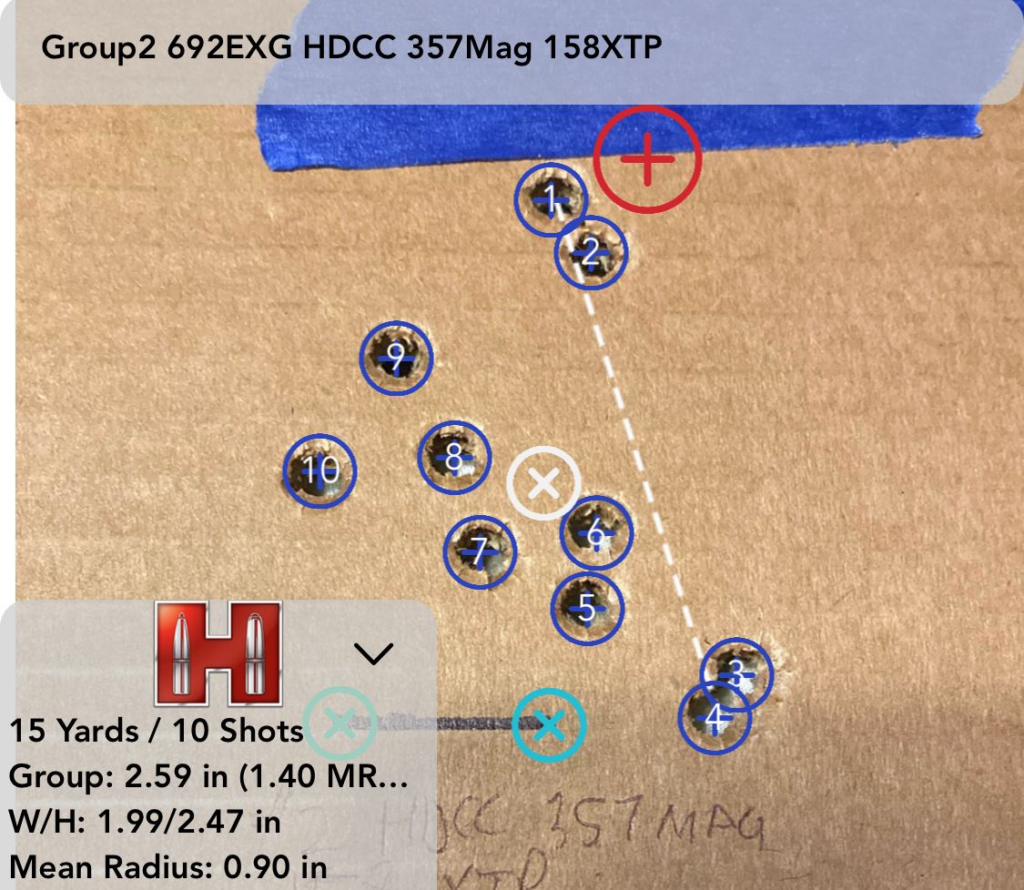
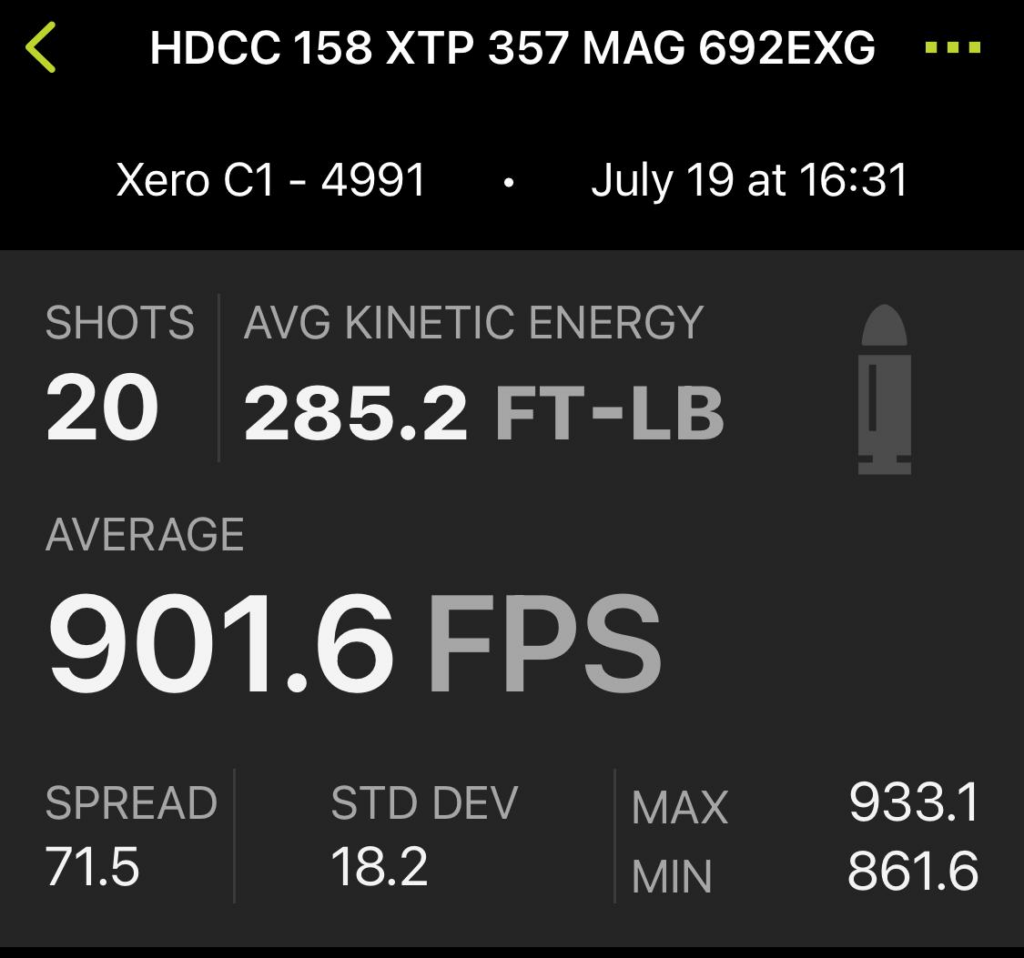
A Note On The Hornady XTP
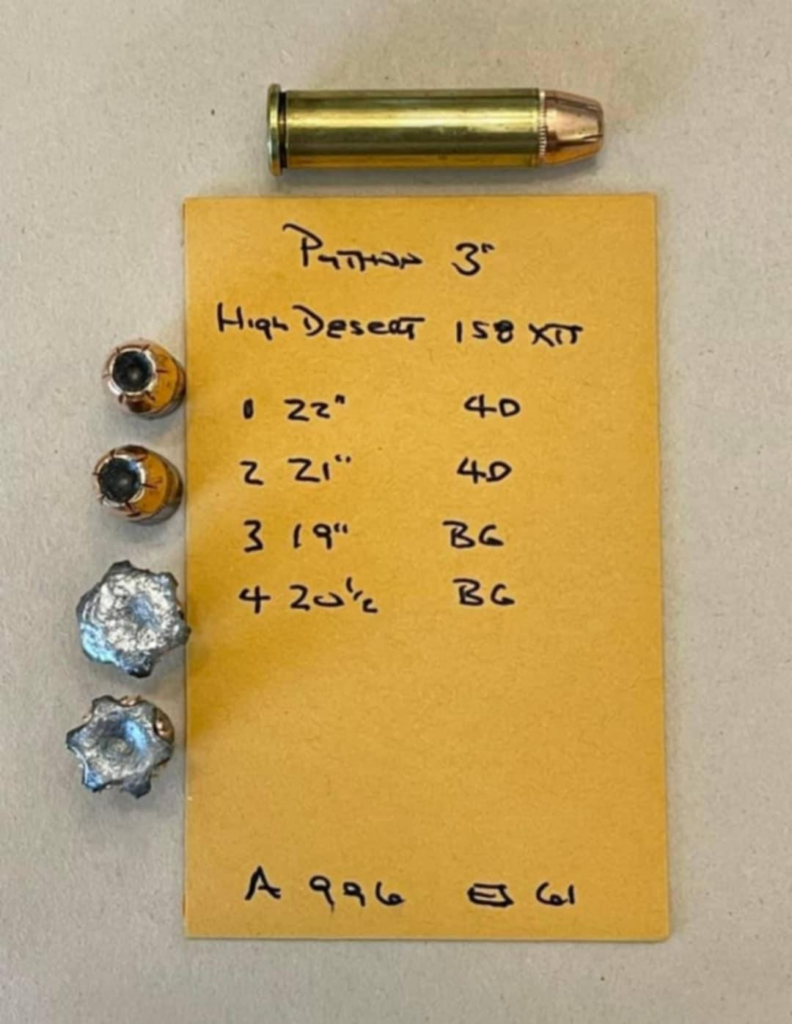
High Desert Cartridge Company’s principal cartridge, the .357 Magnum round, is loaded with Hornady’s XTP JHP bullet, which is one of the Nebraska bullet-maker’s most important projectiles across its entire handgun product line. This bullet probably rates its own article in all honesty.
In a defensive context, XTP bullets tend to expand after penetrating a little deeper than other JHP designs. I’m sure their truncated cone-shaped design is partially responsible for this.
Regardless, in my experience as a handloader, XTP bullets tend to shoot accurately regardless of caliber. They also form the basis for some of Hornady’s other premium bullets, such as their HAP or FlexLock bullets.
The Takeaway
Even though both of these loads were developed for ballistic efficiency and gentle functioning through vintage revolvers, that should not preclude them from being beneficial in newer carry guns chambered for .357 Magnum, too. Especially with the benefit of reducing needless blast and additional recoil.




